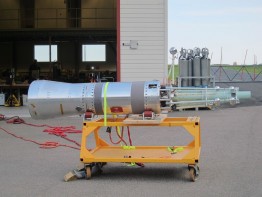Months of warning signs from Mauna Loa, on Hawaii’s Big Island, prompted the U.S. Geological Survey to recently start releasing weekly updates on activity at the world’s largest active volcano. For now, such warning signs can only rely on external clues, like earthquakes and gas emissions. But a University of Washington simulation has managed to demonstrate what’s happening deep inside the volcano.
Read more at UW Today »Natural Hazards and Resilient Communities: Q&A with UW's David Montgomery
UW’s David R. Montgomery, professor of Earth & Space Sciences, knows there’s more to our planet’s surface than what’s at surface level. The geomorphologist studies the ground beneath our feet; both its propensity to shift and evolve and how those processes might affect ecological systems and human societies past and present.
Read more »Former astronaut lands at the College of the Environment
Dream big A question from one of her students at Hudson’s Bay High School in Vancouver, Wash., changed the trajectory of Dorothy Metcalf-Lindenburger’s life: “Mrs. ML, how do astronauts use the restroom in space?” The Earth sciences and astronomy teacher looked for the answer online, but got more than she bargained for: NASA wanted to send math and science teachers to space.
Read more »September launch could give UW team rare measurements of ‘dusty plasmas’
Researchers from the University of Washington are awaiting the launch an over 50-foot-long rocket from a launch site in Norway into the upper reaches of the atmosphere to observe and measure a puzzling phenomenon. This scientific mission, led and funded by the U.S. Naval Research Laboratory, will simultaneously create and observe “dusty plasmas” in Earth’s outer atmosphere. These hot, charged clouds of ions, electrons and dust form and dissipate naturally when swift-moving objects move through the atmosphere — from a satellite launching into orbit to a meteorite burning up in the atmosphere.
Read more at UW Today »UW oceanographers wire up an undersea volcano to study Earth's most extreme environment
Several hundred miles off the coast of Oregon and Washington, there’s an undersea volcano known as Axial Seamount. Thanks to a set of high-tech instruments installed last summer by a team of scientists, many from the College of the Environment, the deep sea is online and oceanographers were able to observe an eruption of the Axial Volcano in April 2015. PBS NewsHour’s Hari Sreenivasan recently spoke with the School of Oceanography‘s John Delaney and Debbie Kelley about their team’s deep sea observatory, including a network of sensors, moorings, and cameras that collect troves of new information about this underwater world.
Read more at PBS NewsHour »





